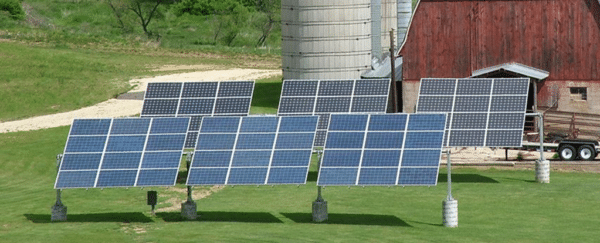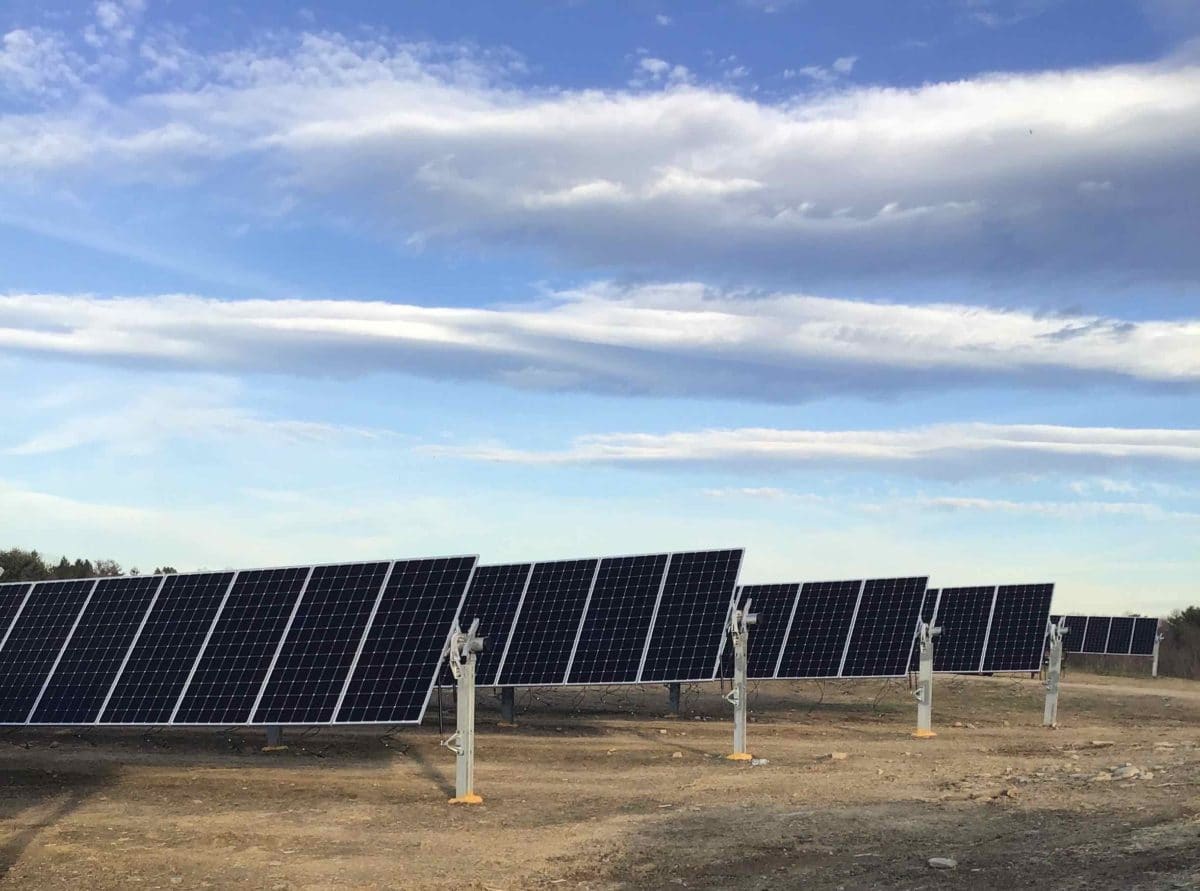What may be the first opt-out community choice solar program in the U.S. has gone live in the Villages of Brockport and Lima, New York, under the name Finger Lakes Community Choice program.
The pilot was developed by Joule Community Power and is similar to a traditional community solar pilot, but with a twist. As designed, the municipality signs up the entire population, leveraging the collective buying power at a scale large enough to secure better terms through a single competitive bidding process with solar providers.
For Brockport and Lima, six community solar farms will supply more than 3,800 households and small businesses with roughly 28 million kWh of electricity annually for the next 25 years, with roughly 500 of those households being low- and middle-income residents.
The solar farms are expected to begin operation in October 2021—all residents will be covered by Spring 2022.
What’s more, under this pilot program homeowners who want to take part do not have to undergo a soft credit check, sign a contract with a community distributed generation, or pay separately for the solar credits.
Many more opt-out programs are expected to launch in the near future.
Change on the horizon
As the program launches, however, National Grid and the New York State Energy Research and Development Authority (NYSERDA) have filed a petition with state regulators that requests that National Grid and, eventually, all investor-owned utilities be granted authority to purchase and distribute a significant portion, if not all, of the state’s expected community solar resources.

Image: Minnesota SEIA
In short, National Grid’s proposal looks to shift the program’s ownership model so that utilities own the community solar installations, rather than the communities served by the installation owning them. Not only does this partially devalue the community aspect of the program, but it could also restrict the ability for municipal leaders to dedicate savings from solar projects to their own residents and communities.
The proposal would place municipal leaders in direct competition with utilities, requiring them to apply for and justify to utilities their need to access community solar benefits for their own low-to-moderate income residents, even when projects are located on their municipal land.
The idea of decreased support for community solar projects is a particularly troubling one, considering how much success New York has seen with community projects.
In 2020, New York added 549 MW of community solar capacity according to NYSERDA, leading the nation. More than 90% of the state’s 2.7 GW pipeline of projects under development that have been awarded NY-Sun incentives, and are expected to come online in the next two years, are community solar, comprising more than 800 projects.
According to the Solar Energy Industries Association, the next five years will see the U.S. community solar market add more than 4 GW of total capacity.
This content is protected by copyright and may not be reused. If you want to cooperate with us and would like to reuse some of our content, please contact: editors@pv-magazine.com.









Really sounds like the wonderful people at National Grid and the New York State Energy Research and Development Authority have the public’s interests in mind.
What are they going to do when the sun don’t shine? The fallacy that wind and solar can replace fossil fuels is a pipe dream. Look at Texas and their reliance on limited use technology. Texas outages put reliability of renewable energy in the spotlight because they cannot generate the output required for consistent energy required without disruption. The disadvantages of limited use technology along with the high costs associated with them makes this form of renewable energy uneconomical and unreliable. If they really wanted to find a source of energy capable of replacing fossil fuels than why have they not invested the wasted funds on limited use technology and applied it to nuclear fusion research?
When the sun shines, water can be pumped to reservoirs above the pumps utilizing any excess solar generated electricity. Then at night or when daytime demand exceeds solar generation the water can be released into water powered generators to augment what will be mostly wind powered electricity.
This article does not completely represent the actual proposed structures of CCA, project ownership, or NGrid’s proposal.
Under either scenario, ownership of the CDG project remains with the developer or 3rd party that purchases the project. NGrid is not proposing to own any generating assets. They are simply willing to purchase the CDG bill credits form the project owner and distribute those bill credits to low-to-moderate income customers within the utility. This helps developers / owners to more easily monetize their generation and reduce their upfront customer acquisition costs. A huge win-win. Also, the NGrid proposal is completely optional for developers to participate in, not mandated.
In the CCA model for Lima / Brockport, the municipality does not own the projects either. The municipalities are simply a conduit through which CDG bill credits can be applied to residents and small business meters on an opt-out basis. The CCA model is a huge win for developers / owners as well (lower upfront acquisition costs and very efficient means of enrolling 1000’s of customers at once).
Both models will definitely propel additional CDG development in New York as a direct result of soft cost reductions and efficiencies. It is getting more and more difficult to signup retail customers as the early adopters have already enrolled over the last 3 years. Retail sales is a large hinderance to putting more CDG in the ground. Also, the goal of the NGrid proposal is to get the savings directly to LMI customers, which are notoriously difficult to sell to. This would give the solar savings to people in need instead of the Walmarts and other ‘credit-worthy’ customers of the world.
The only pushback to both models are companies that charge exorbitant fees to enroll customers one-by-one on a retail basis, and certain CCA administrators who can potentially lose business as a result of NGrid taking the CDG credits and doing their own distribution, reducing available solar supply in the market.
From a development, project ownership, and customer perspective both the NGrid proposal and the CCA concept is amazing. Reduced soft-costs to keep the market going as NYSERDA incentives move down to $0 and efficient customer enrollment.
Unfortunately for those sales / marketing companies doing retail sales, the New York market is quickly evolving and pushing those entities out. Adapt or die.